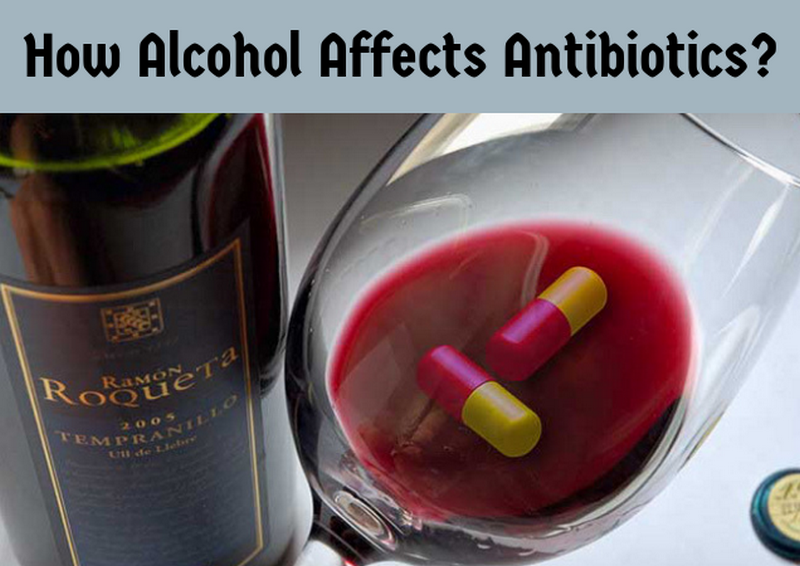British doctors tried to find out what people think about possible interactions between alcohol and antibiotics. A survey of more than 300 patients showed that 81% of respondents are sure that the effect of antibiotics is reduced under the influence of alcoholic beverages. About 71% of respondents claimed that after drinking a glass or two of wine while being treated with antibiotics, they put themselves at an increased risk of side effects.
In most of the cases, antibiotics do not interact with alcohol. Antibacterial drugs do not interact with alcohol, except for isolated cases.
There is a supposition that venereologists have invented this phenomenon in order to keep their patients from having a merry alcoholic life and to protect them from unwanted sexual intercourse during treatment. Another, no less funny story leads us to the 40s of the last century. During World War II, vital penicillin was so scarce that in Europe, it was obtained from the urine of soldiers who were treated with antibiotics. But since the soldiers were given a beer, their urine volume increased, and the concentration of penicillin in it decreases. So doctors banned a diuretic drink for industrial purposes.
Today, popular rumor has labeled alcohol and antibiotics as incompatible substances. Let’s make corrections and move this tablet to those few drugs that you really can’t combine with alcohol.
Cases of incompatibility
Three types of incompatibility between alcohol and antibacterial drugs are known.
- Disulfiram-like reaction. Some antibiotics prevent the decomposition of ethyl alcohol. As a result, a product of incomplete metabolism – acetaldehyde is accumulated in the body. It also provokes intoxication, which is manifested by vomiting, nausea, difficulty breathing. The same effect is possessed by a drug widely used for the treatment of alcoholism – disulfiram, from which the name of this type of interaction comes. Do not allow alcohol to decompose normally metronidazole, ornidazole, tinidazole, cephalosporin, cefotetan. If you are taking any of these drugs, alcoholic beverages are completely contraindicated. Experts recommend abstaining from alcohol for at least 24 hours after the end of treatment with metronidazole and 72 hours – tinidazole. Occasionally, a disulfiram-like reaction may be caused by the combined use of the popular combination of co-trimoxazole sulphonamide with alcohol.
- Impaired metabolism. Ethyl alcohol, entering the liver, is decomposed by the action of the cytochrome P450 2S9 enzyme. The same enzyme is involved in the metabolism of certain drugs, such as erythromycin, cimetidine, antifungal drugs (voriconazole, itraconazole, ketoconazole). With the simultaneous penetration into the liver of alcohol and drugs that use cytochrome P450 2S9, a conflict inevitably happens. Most often, the loser is medication. The body accumulates the drug, which can result in intoxication.
- The toxic effect on the central nervous system (CNS). Sometimes antibiotics have specific side effects on the central nervous system, which are manifested by drowsiness, sedation, dizziness. And everyone knows about the calming effect of alcohol. But the simultaneous combination of two sedatives in the form of an antibiotic and alcohol can inhibit the central nervous system, which is especially dangerous for the elderly, drivers, workers whose duties require the utmost concentration of attention. Drugs that inhibit the central nervous system when combined with the use of alcohol, include: cycloserine, ethionamide, thalidomide and some others.
Conclusion
So, the complete incompatibility of antibiotics with alcohol is found in rare cases. Doctors know these drugs in advance and warn patients about the inadmissibility of taking alcohol during treatment. The list of antibiotics that can be combined with alcohol almost is quite extensive. So, then, a glass of wine in the treatment of, for example, pneumonia is normal? It turns out, it is quite possible.
Domestic doctors do not regulate, in any way, the amount of alcohol that can be safely taken between doses of antibiotics, but their Western colleagues have long considered this phenomenon. Thus, the British Department of Health recommends that men who take antibiotics drink no more than 3-4 units of alcohol, and women limit themselves to 2-3 portions.
Let us remind you that under a portion of alcohol means 10 grams of pure ethanol, which are contained in 100 ml of champagne or wine of 13%, 285 ml of beer (4.9%) or 30 ml of strong drinks (40%). So, 100 grams of brandy is a dose compatible with most antibiotics.
